In the world of digital marketing, content optimization is a critical strategy that goes beyond simply writing articles or blog posts. It focuses on crafting content that is both valuable to users and easily understood by search engines. This practice helps ensure that your website’s content is discoverable, relevant, and ranks well in search engine results pages (SERPs).
What is Content Optimization?
Content optimization refers to the process of improving your content to ensure it meets both user and search engine standards. This involves fine-tuning various elements like keywords, structure, images, metadata, and overall readability to ensure that your content achieves maximum visibility and engagement.
The goal is to make your content not only easy to read for users but also easy to index and rank by search engines like Google. Key components of content optimization include using relevant keywords, creating high-quality content, enhancing the user experience (UX), and adhering to technical SEO practices such as proper formatting, alt text for images, and mobile-friendliness.
Why Content Optimization is Crucial for SEO
Search engines, like Google, use complex algorithms to determine which pages are the most relevant to a user’s search query. Optimizing your content helps you align with these algorithms, making it more likely that your website will appear at the top of the search results.
Here’s why content optimization is essential for SEO success:
- Improves Search Rankings: Well-optimized content is more likely to rank higher in SERPs. By focusing on relevant keywords, improving readability, and enhancing user experience, your content will be more appealing to both search engines and users.
- Drives Organic Traffic: Optimized content helps attract organic traffic, as it is more likely to appear for relevant search queries. This organic traffic can convert into leads, customers, or clients over time.
- Enhances User Experience: When content is optimized for readability and relevance, it makes it easier for users to find the information they need quickly. This leads to lower bounce rates and longer on-page times, which further signals to search engines that your content is valuable.
- Increases Engagement and Conversions: Well-structured, optimized content tends to engage users more effectively. When users find your content helpful and relevant, they are more likely to take action, whether that’s making a purchase, subscribing to your newsletter, or sharing your content.
- Keeps You Competitive: In today’s digital landscape, almost every website is competing for visibility. Optimizing your content ensures that you stay ahead of competitors who might be targeting the same audience and keywords.
Don’t just dream about success—create it. Start your online business now!
Try Wealthy Affiliate (For Free).
Key Elements of Content Optimization
Optimizing content for SEO involves several crucial steps that work together to ensure your content performs well both for users and search engines. Let’s break down the key elements:
Keyword Research and Targeting
Keyword research is the foundation of any SEO content optimization strategy. It involves identifying the words and phrases that your target audience is using in search queries. Here’s why it matters:
- Understanding User Intent: The right keywords allow you to align your content with what users are searching for. It’s important to focus on both short-tail keywords (e.g., “content optimization”) and long-tail keywords (e.g., “how to optimize content for SEO”) to capture broader and more specific search queries.
- Targeting Relevant Keywords: Once you have a list of keywords, you need to strategically place them throughout your content. This includes the title, headers, meta tags, and body text. However, avoid keyword stuffing; instead, focus on naturally incorporating them where they fit best.
- Use Keyword Variations: Search engines are sophisticated and can understand synonyms and related terms. Make sure to use keyword variations to capture a wider audience and signal relevance to search engines.
Content Structure and Readability
Search engines and users both prefer well-structured content. A logical, easy-to-read structure helps users find information quickly, which boosts engagement and lowers bounce rates. For search engines, structured content is easier to crawl and index.
- Paragraphs and Sentences: Break up your content into shorter paragraphs and sentences to improve readability. Users often skim content, so avoid large blocks of text that can overwhelm readers.
- Bullet Points and Lists: Use bullet points or numbered lists (like this one!) to present information concisely. Lists are also favored by search engines and often appear in featured snippets.
- Text Formatting: Use bold, italics, and underlines to emphasize important points. This makes it easier for readers to focus on key takeaways, and search engines can interpret these as signals of important content.
Use of Headers (H1, H2, H3)
Headers (H1, H2, H3, etc.) help organize your content, making it more scannable for readers and more comprehensible for search engines.
- H1 Tag: The H1 tag represents the main title of your content. It should clearly convey the topic of the page, include your main keyword, and be highly relevant to the user’s search intent.
- H2 and H3 Tags: Subheadings (H2 and H3) help divide your content into sections and sub-sections. These make the content easier to read and understand, and they also allow you to incorporate secondary keywords, creating more opportunities for your content to rank for different search queries.
- Organizational Hierarchy: Proper use of headers also creates a clear content hierarchy. H1 is the main topic, H2 are the main sections, and H3 are sub-sections. This helps both users and search engines follow the structure of your article.
Meta Tags (Title and Description)
Meta tags, specifically the title tag and meta description, are critical for both search rankings and click-through rates (CTR). They act as the first impression of your content when it appears in search results.
- Title Tag: The title tag appears as the clickable link in the search engine results page (SERP). It should include your primary keyword, be concise (50-60 characters), and compelling enough to encourage users to click through. This is a key ranking factor in SEO.
- Meta Description: While meta descriptions don’t directly impact rankings, they influence user behavior. A well-written meta description (150-160 characters) summarizes your content and persuades users to click. Make it descriptive, engaging, and include the main keyword.
- Best Practices: Make your meta tags unique for each page, include your target keyword, and ensure they are relevant to the content of the page to avoid high bounce rates.
Image Optimization (Alt Text and File Names)
Images not only enhance the user experience but also play an important role in SEO. Optimizing images properly ensures they contribute to your rankings and don’t negatively affect your site’s performance.
- Alt Text: The alt text (alternative text) is used to describe an image. It is important for both accessibility and SEO. Search engines can’t “see” images the way humans do, so the alt text helps them understand what the image represents. Use relevant keywords naturally in your alt text, but avoid keyword stuffing.
- File Names: Before uploading an image, name the file with descriptive, keyword-rich terms. For example, instead of “IMG12345.jpg,” use a name like “content-optimization-guide.jpg.” This provides more context to search engines and helps your images rank in image search results.
- File Size: Optimize the file size of images to ensure fast loading times. Large, uncompressed images can slow down your website, which negatively impacts user experience and SEO. Use compression tools (e.g., TinyPNG, ImageOptim) to reduce file sizes without sacrificing quality.
Best Practices for Content Optimization in SEO
Content optimization is not just about sprinkling keywords throughout your article; it’s about delivering value, enhancing user experience, and ensuring that search engines can easily index and rank your content. Here are the essential best practices to follow for content optimization in SEO:
High-Quality, Relevant Content
High-quality content is the cornerstone of effective SEO. Search engines prioritize content that delivers real value to users by answering their questions, solving their problems, or offering something unique.
- Provide Value: Focus on creating content that is informative, well-researched, and directly addresses the needs or interests of your audience. Content that is thin, repetitive, or irrelevant will not perform well in search rankings and may lead to a high bounce rate.
- Unique and Fresh Content: Duplicate content can harm your SEO efforts. Always aim to produce original content that offers a new perspective or unique insights on a topic. Regularly updating your content also signals to search engines that your website is current and relevant.
- E-A-T Principles (Expertise, Authority, Trustworthiness): Google values content that demonstrates expertise, authority, and trustworthiness. Ensure your content is accurate, written by credible sources, and backed by research or real-world experience. This is especially important for content in fields like health, finance, or law.
Optimizing for User Intent
User intent, or search intent, refers to the reason behind a user’s query. Understanding and optimizing your content to align with user intent is crucial for satisfying both search engines and users.
- Types of Search Intent: Users typically search for content with one of four intentions: informational (seeking knowledge), navigational (looking for a specific website), transactional (ready to buy), or commercial (researching before making a purchase). Tailor your content to match the specific intent behind relevant queries.
- Answer User Questions: Make sure your content is clear, concise, and directly addresses the user’s needs. For example, if a user is searching for “how to optimize content for SEO,” your content should provide actionable steps and solutions rather than vague or irrelevant information.
- Use of Keywords: Include keywords naturally that match the user’s intent. Don’t focus solely on high-volume keywords; long-tail keywords often reveal more about the user’s specific intent and can result in better-targeted traffic.
Disclaimer: This post contains affiliate links. I may earn a commission if you purchase through these links. However, these links provide access to valuable resources for your online business.
Try Wealthy Affiliate (For Free).
Incorporating Internal and External Links
Links play a significant role in SEO, both from an on-page and off-page perspective. Internal and external links help search engines understand the context of your content, improve user navigation, and enhance your website’s authority.
- Internal Links: These are links from one page on your website to another. Internal linking helps guide users through your site and encourages them to explore more pages, which can improve user engagement and reduce bounce rates. It also distributes link equity (ranking power) across different pages, helping to boost your overall SEO performance.
- External Links: External links point to high-quality, authoritative websites. Linking to relevant and credible sources can help enhance your content’s authority and trustworthiness. For example, if you’re writing about SEO, linking to reputable resources like Google’s SEO guidelines can add value for your readers. However, avoid linking to low-quality or irrelevant sites, as this can harm your SEO.
- Anchor Text: Use descriptive and relevant anchor text for both internal and external links. This helps users understand what to expect when they click on the link, and it also provides context to search engines about the content you are linking to.
Avoiding Keyword Stuffing
Keyword stuffing refers to overloading your content with keywords in an attempt to manipulate search engine rankings. This outdated tactic not only creates a poor user experience but can also lead to penalties from search engines.
- Natural Keyword Placement: While it’s important to use relevant keywords, they should be placed naturally throughout your content. Focus on making your content flow smoothly and provide value rather than forcing keywords into every sentence or paragraph.
- Use of Variations: Instead of repeating the same keyword, use synonyms and related phrases. For example, if your primary keyword is “SEO content optimization,” you might also use variations like “optimizing content for SEO” or “SEO-friendly content strategies.”
- User Experience First: Always prioritize the reader’s experience. If a user finds your content to be awkwardly worded or repetitive because of excessive keyword usage, they are likely to leave, which can lead to high bounce rates and poor engagement metrics.
Mobile Optimization
With the increasing use of mobile devices for browsing, optimizing your content for mobile is no longer optional—it’s a necessity. Search engines like Google use mobile-first indexing, meaning they primarily use the mobile version of your website for ranking and indexing purposes.
- Responsive Design: Ensure that your website is mobile-friendly by using a responsive design. This means your site adjusts seamlessly to different screen sizes, providing an optimal experience on both desktop and mobile devices.
- Fast Loading Times: Mobile users expect fast load times. Large images, unnecessary scripts, and slow servers can negatively affect load times. Use image compression tools, minimize code, and leverage browser caching to improve your site’s speed.
- Mobile Readability: Content should be easy to read on mobile devices. Use legible font sizes, adequate spacing, and avoid long paragraphs. Break up your content with subheadings, bullet points, and images to make it easier for users to consume on smaller screens.
- Mobile-Friendly Content: Consider mobile-specific content strategies, such as shorter headlines, concise paragraphs, and a focus on easily digestible content. Mobile users tend to skim, so structure your content accordingly to deliver quick, valuable insights.
Tools for Effective Content Optimization
Optimizing content for SEO requires a combination of strategies and the right tools to streamline the process. These tools help ensure that your content is well-optimized for search engines while maintaining a high-quality user experience. Let’s explore the key categories of tools that can aid in content optimization:
SEO Content Analyzers
SEO content analyzers are essential for evaluating and improving your content’s SEO performance. These tools provide recommendations on how to optimize your content for specific keywords and analyze factors such as keyword density, readability, structure, and more.
- SurferSEO: SurferSEO is a powerful content optimization tool that analyzes your content against top-ranking pages for your target keyword. It provides real-time suggestions on keyword usage, content length, heading structure, and semantic keywords to improve your rankings. SurferSEO’s Content Editor also helps you optimize your content as you write by offering guidelines based on SERP analysis.
- Clearscope: Clearscope is another top-tier content optimization tool that uses AI to analyze top-ranking pages for your target keyword. It offers keyword suggestions, content grading, and insights into which terms to include in your content to increase its relevance. Clearscope’s reports are designed to ensure that your content matches the user intent and performs well in search rankings.
- Yoast SEO (for WordPress Users): If you’re using WordPress, the Yoast SEO plugin can be incredibly useful for optimizing your content. It provides real-time analysis of your content’s SEO performance, offering suggestions on improving keyword density, readability, meta tags, and internal linking. Yoast is particularly helpful for on-page SEO.
Grammar and Readability Tools
Grammar and readability are important aspects of content optimization. High-quality content not only ranks better but also engages users, keeping them on your page longer. Grammar and readability tools help ensure that your content is clear, polished, and easy to read.
- Grammarly: Grammarly is a popular tool that checks your content for grammatical errors, punctuation mistakes, and awkward phrasing. It offers suggestions for improving sentence structure, vocabulary, and tone, ensuring that your content is professional and polished. Grammarly’s browser extension allows you to edit content directly in your content management system (CMS), making it easy to optimize as you write.
- Hemingway Editor: The Hemingway Editor is a readability tool designed to make your writing clear and concise. It highlights complex sentences, passive voice, and excessive adverbs, helping you simplify your content for better readability. Hemingway also provides a readability score, which is useful for ensuring that your content is easy to understand for your target audience.
- Readable: Readable is a tool that helps assess the readability of your content by analyzing sentence length, structure, and complexity. It provides feedback on how to improve the clarity of your writing and makes suggestions for adjustments to ensure your content is accessible to a broader audience.
Image Compression Tools
Images are crucial for engaging users and improving the visual appeal of your content, but large image files can slow down your website, negatively affecting both user experience and SEO. Image compression tools help reduce the file size of your images without sacrificing quality, ensuring faster load times and better SEO performance.
- TinyPNG: TinyPNG is a popular tool that compresses PNG and JPEG images without compromising quality. It reduces the file size by selectively decreasing the number of colors in the image, resulting in smaller files and faster loading times. Compressed images are essential for mobile optimization and overall site performance, which are critical ranking factors for search engines.
- ImageOptim: ImageOptim is a desktop tool that helps compress images by stripping out unnecessary metadata while maintaining visual quality. It works well for both web and mobile image optimization, ensuring that your images load quickly without detracting from the user experience.
- ShortPixel: ShortPixel is an image optimization plugin that automatically compresses images in WordPress. It offers both lossy and lossless compression options, allowing you to balance image quality and file size. ShortPixel also optimizes thumbnails and supports WebP format, a lightweight image format that can further improve load times.
Financial independence is not a dream—it’s a choice. Click here to start now!
Try Wealthy Affiliate (For Free).
Keyword Research Tools
Keyword research is the backbone of SEO. Identifying the right keywords ensures that your content is targeting what users are searching for and helps your content rank higher on search engine results pages (SERPs). Keyword research tools offer valuable insights into search volume, keyword difficulty, and competition.
- Ahrefs: Ahrefs is a comprehensive SEO tool that excels in keyword research. It provides detailed keyword metrics such as search volume, keyword difficulty, and click-through rates (CTR). Ahrefs also offers a content gap analysis feature, which helps you identify keywords that your competitors are ranking for but you’re not. This tool is invaluable for finding new keyword opportunities and optimizing your content around relevant, high-traffic search terms.
- SEMrush: SEMrush is another powerful tool for keyword research and competitive analysis. It provides keyword suggestions based on search volume, competition, and user intent. SEMrush also allows you to track keyword rankings and monitor how your content is performing over time. Its SEO Content Template feature provides guidelines for optimizing content based on top-ranking pages for your target keyword.
- Google Keyword Planner: Google Keyword Planner is a free tool that helps you discover new keywords and see how frequently they are searched. It’s particularly useful for understanding user behavior and identifying long-tail keywords. While it’s primarily designed for advertisers, it’s an effective tool for SEO keyword research as well.
- Ubersuggest: Ubersuggest, created by Neil Patel, is a user-friendly keyword research tool that offers keyword suggestions, search volume data, and keyword difficulty scores. It’s particularly helpful for beginners or those looking for a simpler tool to identify keyword opportunities and optimize their content around them.
How to Measure the Success of Content Optimization
Measuring the success of your content optimization efforts is crucial for understanding what works and what doesn’t. By analyzing various metrics, you can gain insights into your content’s performance and make informed decisions to enhance your SEO strategy. Here are some key ways to measure the effectiveness of your content optimization:
Monitoring Organic Traffic
One of the most direct indicators of successful content optimization is the amount of organic traffic your website receives. Organic traffic refers to visitors who find your site through search engine results rather than paid advertisements.
- Use Google Analytics: Google Analytics is a powerful tool that allows you to track and analyze organic traffic. You can view metrics such as the number of visitors, page views, and sessions over time. By setting up goals and conversions, you can also determine how many visitors take desired actions, such as signing up for a newsletter or making a purchase.
- Identify Traffic Sources: Analyze where your traffic is coming from to determine how well your content is performing. In Google Analytics, you can segment traffic by source, such as organic search, referral, or social media. Understanding which sources drive the most traffic can help you refine your content strategy and focus on the most effective channels.
- Monitor Trends Over Time: Tracking organic traffic trends over time can help you assess the impact of your content optimization efforts. Look for patterns in traffic spikes or drops, and correlate these with specific content updates, keyword targeting, or other SEO strategies you’ve implemented.
Analyzing Bounce Rate and Dwell Time
Bounce rate and dwell time are important metrics that provide insights into user engagement and content relevance.
- Bounce Rate: Bounce rate measures the percentage of visitors who leave your website after viewing only one page. A high bounce rate may indicate that your content is not meeting user expectations or that visitors are not finding what they were looking for. Aim for a lower bounce rate, as it often correlates with higher user engagement and satisfaction. In Google Analytics, you can monitor the bounce rate for individual pages to identify which content needs improvement.
- Dwell Time: Dwell time refers to the amount of time a user spends on your page before returning to the search results. While Google does not officially use dwell time as a ranking factor, a longer dwell time typically suggests that users are finding your content valuable. To improve dwell time, ensure your content is engaging, easy to read, and provides comprehensive answers to user queries. You can analyze dwell time through heatmap tools like Hotjar or Crazy Egg, which show how users interact with your content.
Tracking Rankings with Google Search Console
Google Search Console (GSC) is a free tool provided by Google that allows you to monitor your website’s presence in search results. It’s essential for understanding how well your optimized content is performing.
- Monitor Keyword Rankings: GSC provides data on which keywords are driving traffic to your site and how your pages rank for those keywords. By analyzing this data, you can identify which content is performing well and which keywords may need further optimization.
- Click-Through Rate (CTR): The CTR metric indicates how often users click on your link when it appears in search results. A low CTR may suggest that your title tags or meta descriptions need improvement. By testing different versions of titles and descriptions, you can optimize for higher click-through rates, which can improve your rankings over time.
- Search Analytics Report: Use the Search Analytics report in GSC to view your website’s performance for specific queries. This report shows data on impressions, clicks, average position, and CTR for each keyword, helping you identify areas for improvement and track changes over time.
Evaluating Engagement Metrics
Engagement metrics provide deeper insights into how users interact with your content and how effectively it meets their needs.
- Time on Page: Time on page indicates how long users spend on a particular page. Longer time spent usually suggests that visitors are engaged and finding the content valuable. If you notice that certain pages have a short average time on page, consider reviewing and improving those pages to make them more engaging or relevant.
- Social Shares and Comments: The number of social shares and comments on your content can be a good indicator of its quality and relevance. Engaging content often gets shared across social media platforms, increasing its reach and potential traffic. Monitor social media metrics to see how well your content resonates with your audience.
- Conversion Rates: Ultimately, the success of your content optimization efforts can be measured by how well your content converts visitors into customers or leads. Set up conversion tracking in Google Analytics to evaluate how many visitors complete desired actions, such as signing up for a newsletter, downloading a resource, or making a purchase. High conversion rates suggest that your content is effectively meeting user needs and driving results.
Common Mistakes to Avoid in SEO Content Optimization
While optimizing your content for SEO is crucial, certain mistakes can undermine your efforts and even harm your rankings. Here are some common pitfalls to avoid to ensure your content optimization strategy is effective and sustainable:
The life you want is waiting for you. Start building your online business today!
Try Wealthy Affiliate (For Free).
Over-Optimization
Over-optimization occurs when you excessively tweak your content to rank higher in search engines, leading to a poor user experience and potential penalties from search engines.
- Keyword Stuffing: This is the practice of excessively using target keywords in your content in an attempt to manipulate rankings. For instance, if you’re targeting the keyword “content optimization,” stuffing it unnaturally into your text can make it sound awkward and disrupt the flow of the content. Instead of improving your rankings, keyword stuffing can lead to a high bounce rate as users leave your site due to poor readability. Search engines like Google prioritize content that provides value to users, so aim for natural keyword integration while ensuring your content reads well.
- Unnatural Links: Building backlinks is essential for SEO, but engaging in manipulative linking practices can backfire. Over-optimizing anchor text by using exact-match keywords excessively in your backlinks can trigger penalties from search engines. Additionally, acquiring links from irrelevant or low-quality sites can harm your site’s authority. Focus on building high-quality, natural links from reputable sources that add value to your content and enhance your credibility.
Ignoring Mobile-Friendliness
With the increasing use of mobile devices to access the internet, optimizing your content for mobile is no longer optional—it’s essential. Ignoring mobile-friendliness can significantly impact user experience and SEO performance.
- Responsive Design: Ensure your website is responsive, meaning it automatically adjusts to fit different screen sizes and orientations. A non-responsive site may display poorly on mobile devices, leading to frustrated users who may leave your page quickly. Google’s mobile-first indexing prioritizes mobile-friendly sites in search results, so optimizing your site for mobile is crucial for maintaining good rankings.
- Page Load Speed: Mobile users expect fast loading times. A slow-loading site can lead to high bounce rates and lost traffic. Use tools like Google PageSpeed Insights to analyze and improve your site’s load speed on mobile devices. Techniques such as image compression, reducing unnecessary scripts, and leveraging browser caching can enhance performance.
- Touch-Friendly Navigation: Ensure your website’s navigation is user-friendly on mobile devices. Buttons should be easy to tap, and links should be spaced adequately to prevent users from clicking the wrong ones. A seamless mobile experience can improve engagement and reduce bounce rates, positively affecting your SEO.
Focusing Solely on Keywords, Not User Experience
While keywords are essential for SEO, they should not be the sole focus of your content optimization strategy. Prioritizing user experience alongside keyword targeting is vital for creating content that resonates with your audience.
- Neglecting User Intent: Understanding user intent is crucial for creating valuable content. Simply targeting high-traffic keywords without considering what users are actually searching for can lead to content that misses the mark. For instance, a user searching for “content optimization tips” may be looking for actionable advice rather than a general overview. Conduct thorough keyword research to align your content with user intent, ensuring you meet their needs and provide relevant information.
- Lack of Engagement Elements: Content that fails to engage users will struggle to keep them on the page. Incorporate elements such as images, videos, infographics, and interactive content to enhance the user experience. Break up text with subheadings, bullet points, and whitespace to make your content easier to read. The more engaging your content is, the more likely users will stay, share, and return to your site.
- Ignoring Readability: Content that is difficult to read or overly technical can alienate your audience. Aim for clear, concise writing that’s accessible to a broad audience. Use tools like the Hemingway Editor or Grammarly to check readability scores and ensure your writing is appropriate for your target audience. Prioritize clarity and simplicity to create content that users can easily digest and understand.
Conclusion
As we wrap up our discussion on content optimization in SEO, it’s essential to reflect on the key takeaways and emphasize the ongoing nature of effective SEO practices. Here’s a recap of the crucial points, the importance of continuous improvement, and final tips for ensuring long-term success in SEO.
Recap of Key Points on Content Optimization in SEO
- Understanding Content Optimization: Content optimization involves enhancing your website content to improve its visibility and ranking in search engine results. Key elements include keyword research, content structure, use of headers, meta tags, and image optimization.
- Best Practices for Content Optimization: High-quality, relevant content tailored to user intent is critical for SEO success. Avoiding keyword stuffing, focusing on mobile optimization, and ensuring a seamless user experience are essential practices that contribute to better rankings and engagement.
- Measuring Success: To gauge the effectiveness of your content optimization efforts, monitor organic traffic, analyze bounce rates and dwell time, track rankings using tools like Google Search Console, and evaluate engagement metrics such as time on page and conversion rates.
- Common Mistakes to Avoid: Being aware of pitfalls such as over-optimization, neglecting mobile-friendliness, and solely focusing on keywords instead of user experience can prevent costly mistakes that hinder your SEO performance.
Why work for someone else’s dream? Build your own business now!
Try Wealthy Affiliate (For Free).
The Importance of Continuous Improvement
SEO is not a one-time effort but a continuous process that requires ongoing attention and adaptation. Search engine algorithms are constantly evolving, and user preferences change over time. Therefore, it’s essential to regularly review and update your content to stay relevant and competitive. Here are some key points to consider for continuous improvement:
- Stay Updated with SEO Trends: Keep yourself informed about the latest trends and algorithm updates in the SEO landscape. Following reputable SEO blogs, attending webinars, and participating in online forums can help you stay ahead of the curve.
- Regularly Analyze and Optimize Content: Periodically review your existing content to identify opportunities for optimization. Update outdated information, refresh keywords, and improve readability. This proactive approach helps maintain your content’s relevance and performance.
- Solicit User Feedback: Gathering feedback from your audience can provide valuable insights into how well your content meets their needs. Use surveys, comments, and analytics to understand user behavior and preferences, allowing you to tailor your content more effectively.
Final Tips to Ensure Long-Term Success in SEO
- Prioritize Quality Over Quantity: While producing a high volume of content can be tempting, prioritize creating high-quality, in-depth articles that provide genuine value to your audience. Quality content tends to perform better in search rankings and encourages user engagement.
- Leverage Social Media and Promotion: Share your optimized content across social media platforms and other channels to drive traffic and increase visibility. Engaging with your audience on social media can also enhance brand awareness and attract more visitors to your website.
- Build a Strong Internal Linking Strategy: Internal links help guide users to related content on your site, improving user experience and increasing page views. They also help search engines understand the structure of your website, which can positively impact your SEO.
- Keep an Eye on Competitors: Regularly analyze your competitors’ content and SEO strategies. Identify what works for them and find opportunities to differentiate your content or improve upon their tactics.
- Invest in Training and Tools: Equip yourself with the knowledge and tools needed for effective SEO. Consider taking courses, reading industry-relevant books, and utilizing SEO tools to enhance your skills and improve your content optimization efforts.
Final Thoughts
In summary, content optimization is a crucial aspect of SEO that requires careful planning, execution, and ongoing improvement. By understanding the key elements of optimization, measuring success effectively, avoiding common pitfalls, and committing to continuous improvement, you can create a robust SEO strategy that drives traffic, enhances user experience, and ultimately leads to long-term success. Remember, the digital landscape is ever-changing, so staying adaptable and open to new strategies will keep your content relevant and effective in the competitive world of SEO.
We’d love to hear from you! Share your experiences with content optimization in SEO—what strategies have worked for you, and what challenges have you faced? If you have any questions or need clarification on any topics we’ve discussed, feel free to drop a comment below. Your insights and inquiries can help foster a community of learning and improvement, so let’s engage in a fruitful conversation!
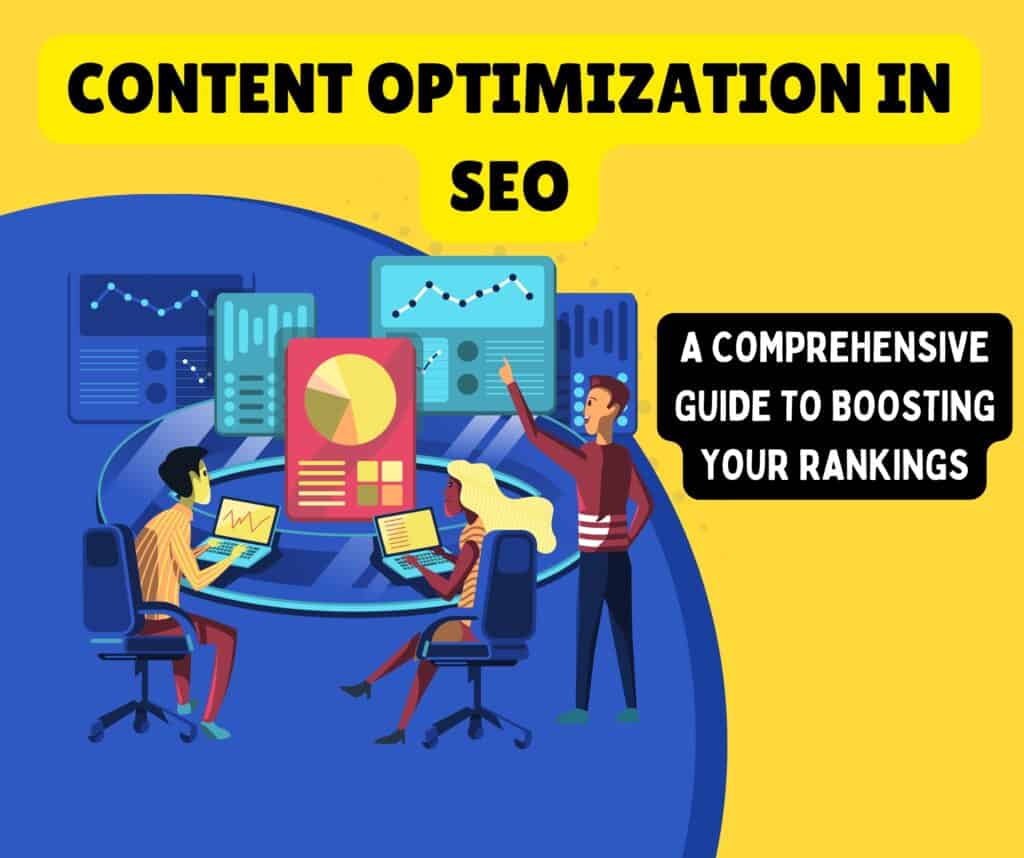
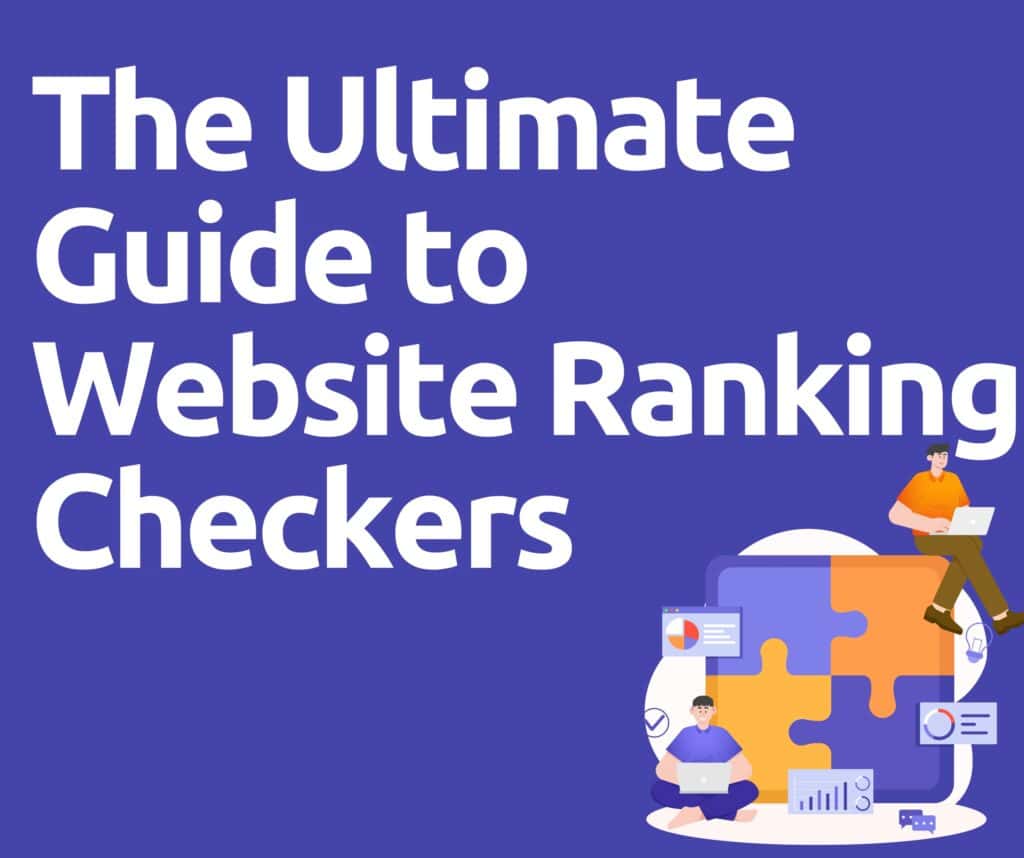
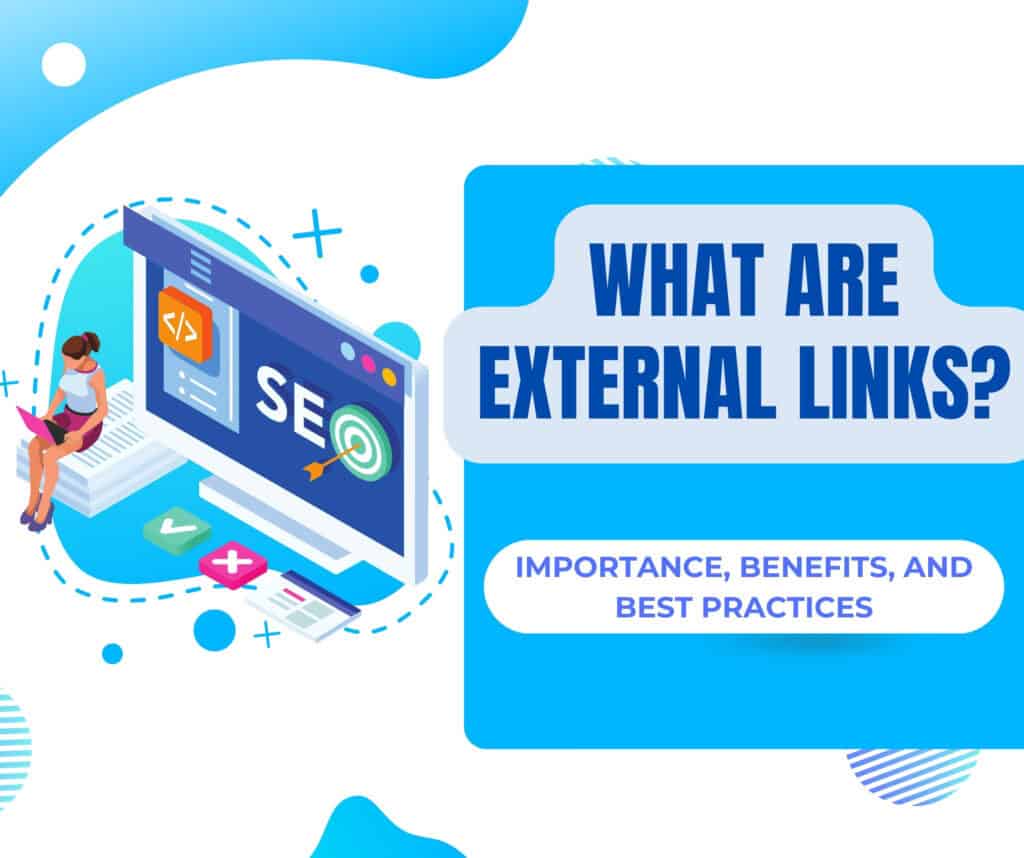
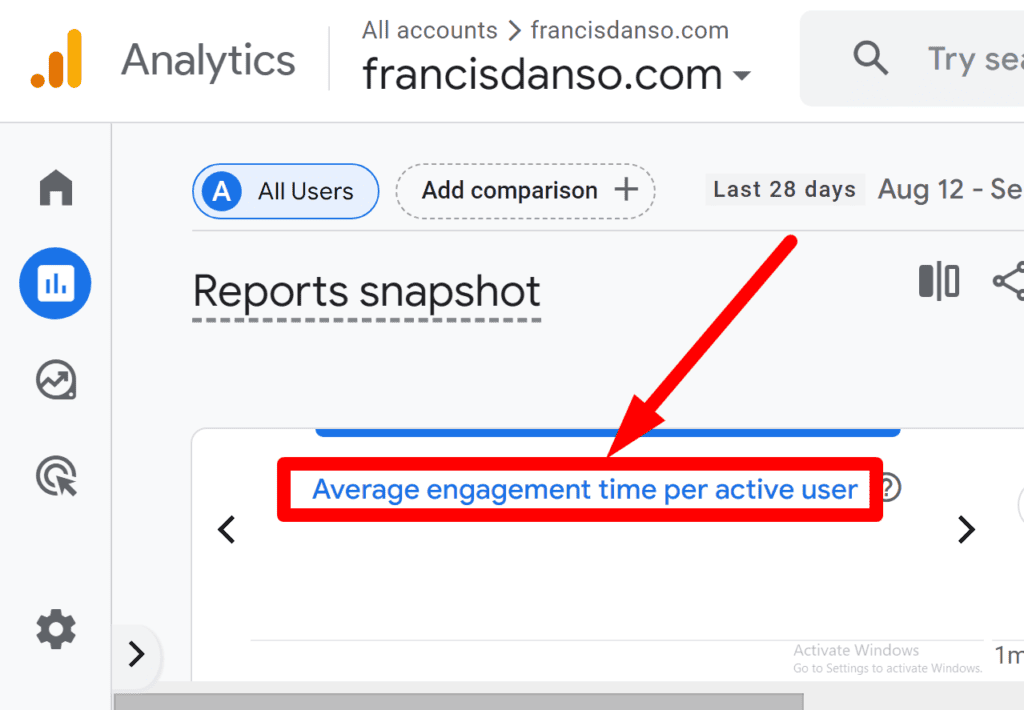
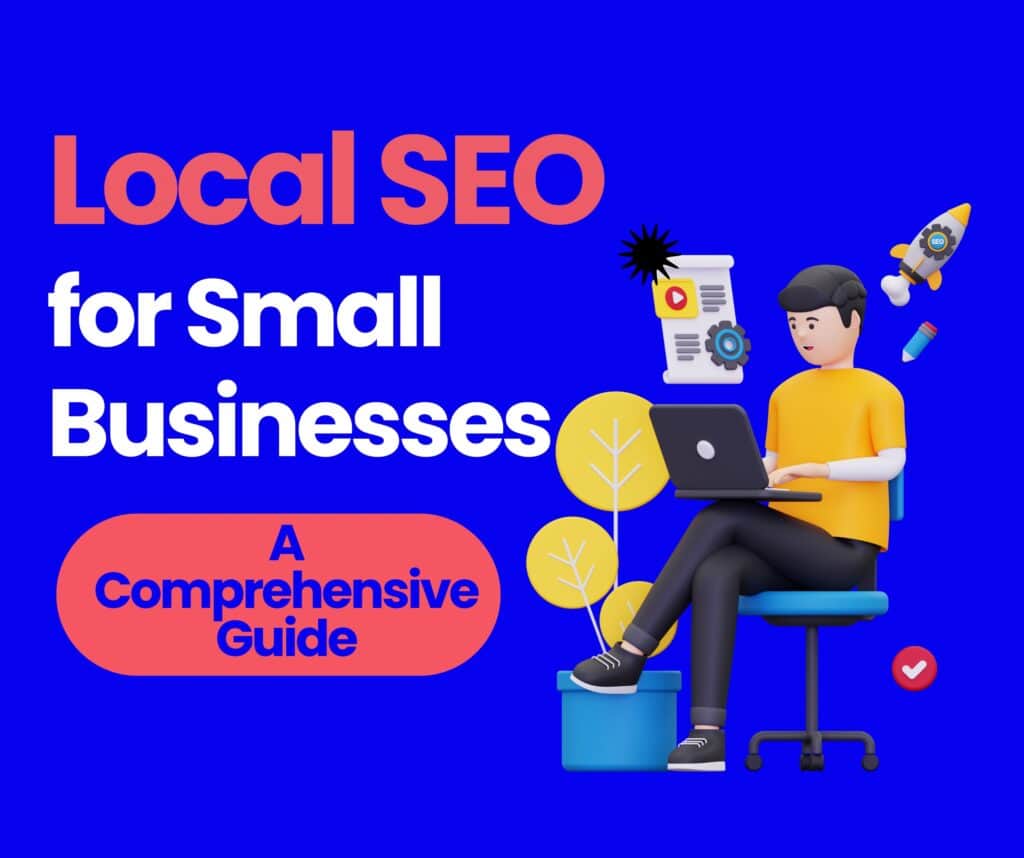
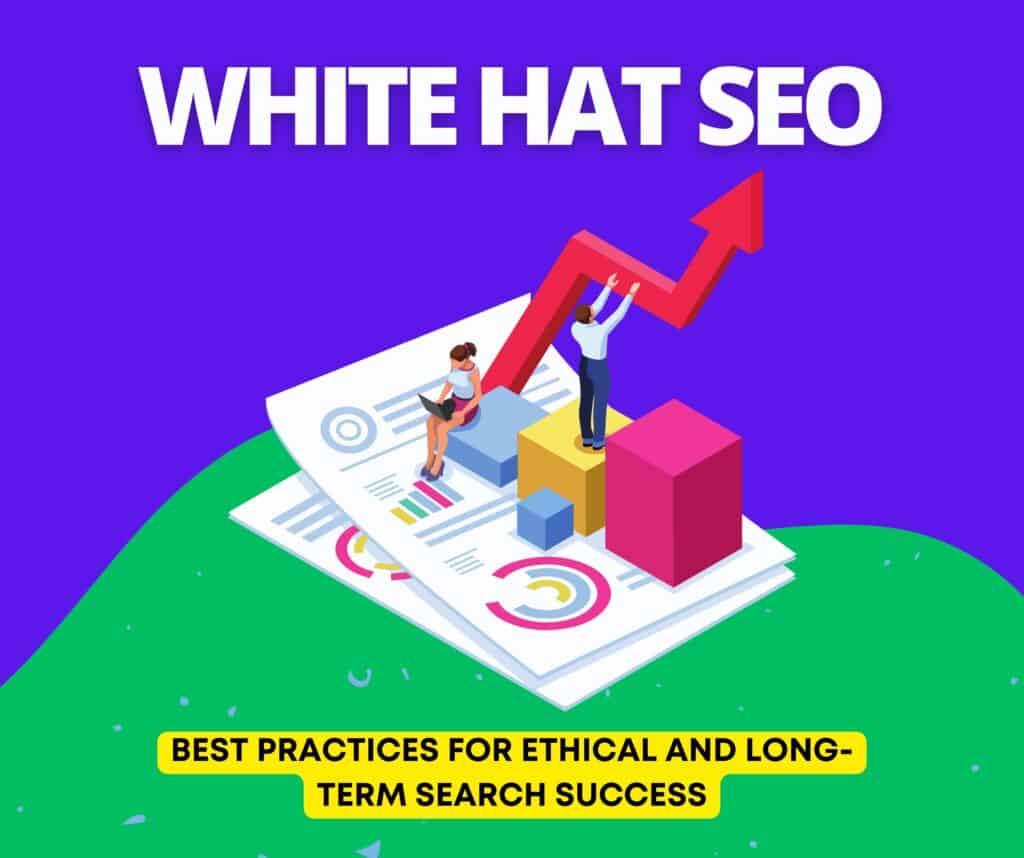
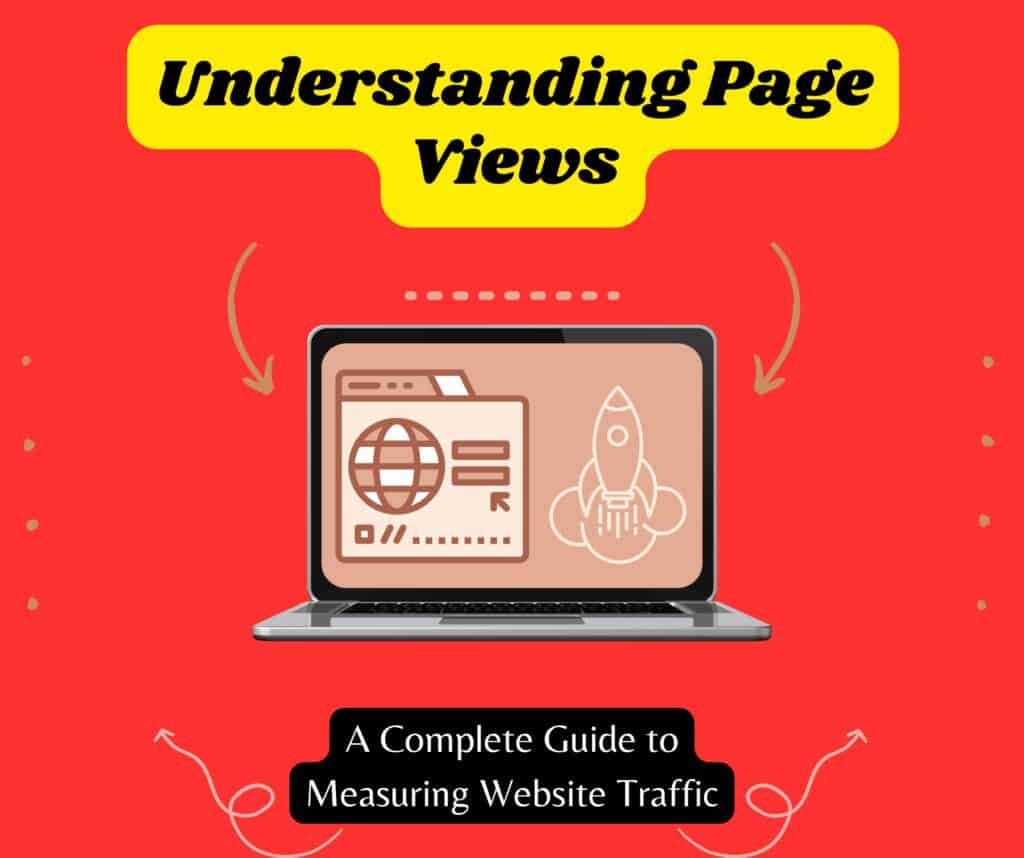

I am very delighted to find this internet site on bing, just what I was searching for as well saved to fav
Very insightful articles and reviews at the moment
I’m quite new to blogging, and I truly value your content. This article really grabbed my attention. I’ll bookmark your website and keep checking back for fresh updates.
I very delighted to find this internet site on bing, just what I was searching for as well saved to fav